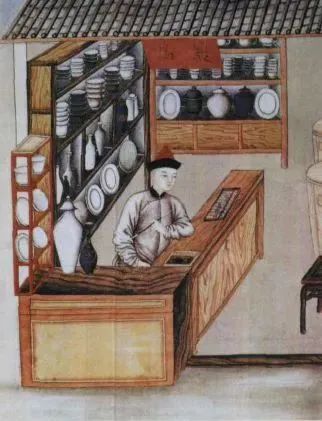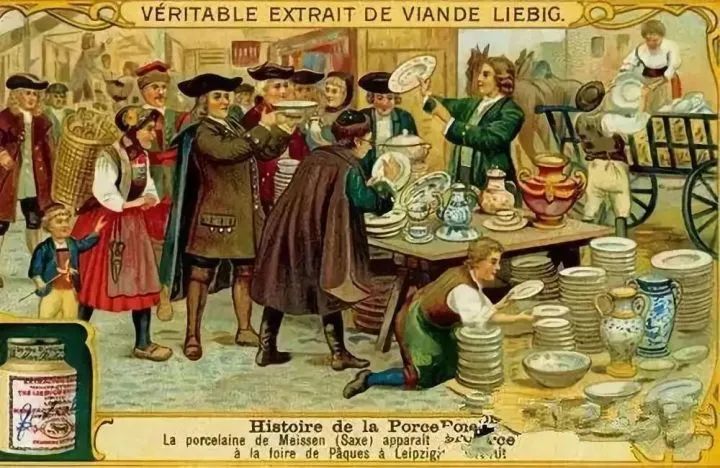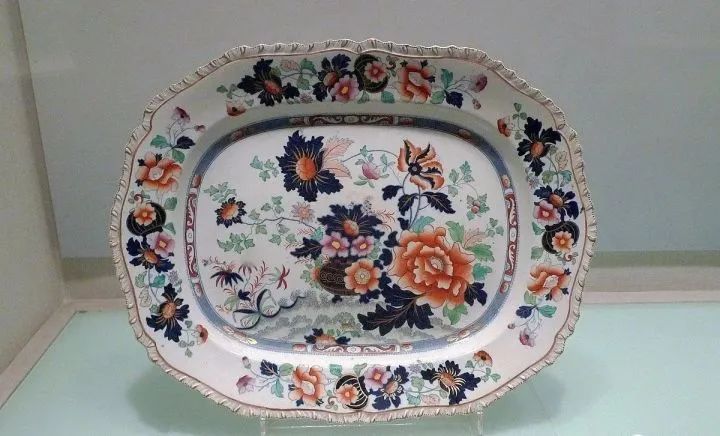2018 RWKCHINA,INC.
京ICP备16013568号
There is a dialect in Beijing called "Porcelain", which means "BBF (Best Brother Forever)". but the porcelain in today's article is genuine porcelain.

Chinese porcelain has a very long history. It first appeared in the Shang Dynasty in the 16th century BC and flourished in the Tang Dynasty. At that time, porcelain followed the Silk Road from Chang 'an through Central Asia to Persia and thence to the Mediterranean Sea and into Africa. Until the early Qing Dynasty, porcelain was China's leading export to the world. Especially in the European royal families, aristocrats and other high society, the Chinese home to eat porcelain bowl, have become their flaunt wealth weapon.

▲Porcelain shop (Chinese export art) : It depicts Chinese porcelain merchants waiting for western merchants to inspect their wares. (approx. 1830)
Europeans like porcelain and think porcelain is a very incredible, and even on the production of porcelain is controversial. To their eyes, China was white and smooth, and of a very hard texture. So some alchemists have speculated that the porcelain was actually made from eggshells and lobster shells, mixed with fish, egg white, and cow and horse dung... I have to say that the imagination of these alchemists is really great!

▲ The Love of Porcelain in Western High society (Diagram)
Italian traveler and merchant Marco Polo was traveling in China 17 years, in his travel notes "the east experiences" describes the method of porcelain production: manufacture porcelain approach is to first take a soil in mine, is the sun for thirty or forty years, the earth at this time as fine soil, coloring, shaping, placed in the kiln firing. The record was also the most convincing European claim of the time.

▲Marco Polo
The love of Chinese porcelain and its value in the world at the time had driven the aristocracy crazy. Legend has it that Augustus II, in 1717, offered 600 heavily armed Saxony dragoons in exchange for the collection of more than 100 Pieces of Chinese porcelain owned by William I, king of Prussia. Some people would be willing to lose everything for a piece of porcelain. In the huge market demand, westerners had to start to study the practice of porcelain, and even to China to learning.

Where do westerners want to learn porcelain making? That must be Jingdezhen. But China's porcelain technology was classified, and Jingdezhen had a policy of not allowing foreigners to stay overnight. Therefore, the envoys from various countries tried every means to drill into Jingdezhen, and one of them succeeded.

▲Francois Xavier d 'entrecolles
At that time, Louis XVI of France sent Francois Xavier d 'entrecolles to China to pay tribute to Kangxi, which was appreciated by the emperor and thus granted residence in Jingdezhen. He lived there for seven years, and by observing and recording in detail the porcelain making process and the kiln working procedure, he wrote down "The Most complete Strategy of making genuine porcelain" and sent it back to France. Since then, the French began to copy porcelain and spread it all over Europe.


▲ The letter sent back to Europe by Francois Xavier records the methods and materials of making porcelain
From the late 17th century to the middle of the 18th century, European ceramics were mostly copied from the styles and styles of Chinese porcelain, and many of them were even directly copied from China. It was not until a scientist in a Meissen factory in Germany succeeded in producing dishes with unique patterns that European porcelain was invented.

▲Pastel flower pattern rectangular plate (18th century England)
To be more arrogant, world porcelain originated in China, and Chinese porcelain originated in Jingdezhen. Even today, Jingdezhen is synonymous with Chinese porcelain. Many artists from all over the world gather here, based on porcelain, they carry their artistic creativity and emotional expression.

SESANOO is a porcelain brand we discovered in Jingdezhen. Luo Xiao, a young artist, came to Jingdezhen 15 years ago to learn ceramic skills. By virtue of the understanding of art and the emotional integration of the painstaking creation, formed a unique style, to give porcelain to the soul.

With the launch of dining service by Yue Space (Beijing), we have chosen sesanoo series as our first choice for the meal. After the chef's consideration and the design of the plate, the delicious food and the beautiful form have become a good combination, which not only satisfies the taste buds to enjoy, but also adds the visual aesthetic feeling. Yue Space (Beijing) is now officially open, if you have the opportunity to visit the experience.
